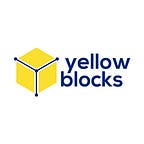STARTUP FUNDING STAGES: FROM SELF-FUNDING TO SERIES A,B,C
If you are a start-up looking to raise enough funds for your business, you can find out more about different stages of funding from self-funding to IPO.
1. STARTUP FUNDING STAGES: FROM SELF-FUNDING TO SERIES A — B — C
Start-ups, irrespective of their size and nature of business require money to transform their innovative business concepts into reality. In fact, a good number of start-ups fail to succeed due to lack of funds or the ability to acquire it. Hence, if you are a start-up looking to carve your own success path and raise enough funds for your business, then you can find out more about different stages of funding from self-funding to IPO through this one-minute bite size.
2. SELF-FUNDING
Self-funding is all about assessing the amount that the entrepreneur can gather from his/her own pocket. At this stage, the founder determines the amount of savings or investments that he/she has in their accounts and if required approaches his/her friends as well as family members for some funds too. This stage of financing is devoid of any documentation or complexities and is ideal for start-ups that require limited amounts of funds for launching and running their business.
3. SEED FUNDING
Seed funding is required by start-ups at an initial stage and helps them to identify as well as create the right path for their business. Money raised around $1M — $3M from angles, accelerators, seedfirms. Funds that are acquired at this particular stage are utilized for understanding the customer’ preferences, demands as well as tastes and later creating a service or product based on the information.
PS: some Incubation / Accelerator / Early Stage VC will also provide pre-seed funding round from 30K — 100K for early stage idea.
4. VENTURE CAPITAL FUNDS: SERIES A FUNDING
A company that has already created its final products/services and has also launched the same into the market raises venture capital funds to expand their operations or business further. Series funding enables investors to support entrepreneurs with the proper funds to carry out their dreams, perhaps cashing out together down the line in an IPO.
Series A funding in order to further optimize company’s user base and product offerings. Opportunities may be taken to scale the product across different markets as well for promoting business growth. In the Series A round of funding, the investors aren’t simply searching for companies with excellent ideas, but for businesses with a plan for developing a business model that will generate long-term profit. Firms that go through the Series A raised from $2 million to $15 million fund and valued at around 15 million dollars. The investors in this particular funding round are from traditional VC firms such as Benchmark, Sequoia, Accel and Greylock.
Read more about Series A and Venture capitals:
http://yellowblocks.org/accelerators-incubators-venture-capitals-venture-builders/
https://www.investopedia.com/articles/personal-finance/102015/series-b-c-funding-what-it-all-means-and-how-it-works.asp
5. SERIES B FUNDING
A business that opts for Series B funding indicates that its products are being rightly marketed as well as the users or customers are purchasing the services/products as was planned earlier. In fact, B is for Build, these funds help the company in providing salaries to its employees, hiring additional staff, enhancing infrastructure as well as establishing itself as a globally recognized company. Series B funding help companies to prepare to a level higher and expand its market presence. Series B appears similar to Series A in terms of processes and key players, and difference with Series B is the addition of a new wave of other venture capital firms that specialize in later stage investing. Firms that go through the Series B raised $7M and $10M and valued at around $30M and $60M.
More about Series B: https://www.investopedia.com/terms/s/series-b-financing.asp
6. SERIES C FUNDING
Start-ups can acquire as many funding rounds as needed and there isn’t any restriction on the same. However, during the Series C round of funding, the investors and the owners are slightly cautious about raising funds, as increased rounds of investments requires them to release more of their business equity. Companies that opt for Series C round of funding are already successfulin their respective field or industry. Such businesses opt for additional funds to create fresh products, enter newer markets or for acquiring other firms. Hence, Series C round of funding helps businesses to scale their companies and grow quickly. In Series C, there are more investors come to play such as hedge funds, investment banks, private equity firms and big secondary market groups. Firms that go through the Series C raised hundreds of millions of dollars and valued from $100M+.
7. WHAT’S NEXT?
Do your homework! Understand your business needs, Outline funding goals, Research investors, and Enhance your networks in startups ecosystem are the required steps for startups looking finance funding.
Bonus: an infographic about Founders and Investors from FundersAndFounders:https://blog.adioma.com/wp-content/uploads/2015/04/the-hackers-guide-to-investors-infographic.png
Another Bonus: Upcoming event
VIETNAM DEEP TECH ECOSYSTEM MEETUP — The convergence of emerging tech:http://yellowblocks.org/yb006/
A content curation by YellowBlocks
Sources: investopedia
About YellowBlocks
Established in 2018, YellowBlocks is the first emerging tech ecosystem connector and consulting firm for Vietnam and the world. We have more than 100 partners and 80 advisors globally, with an extended reach of 100,000+ audience in the tech/ startup space.
Subscribe: yellowblocks.org/countmein
Find us: Website | Facebook | Twitter | Linkedin | Medium | Meetup
